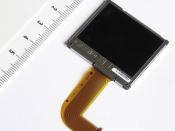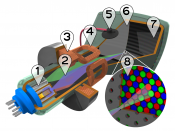The Telegraph
Throughout history, there have been many versions of the telegraph. It was first demonstrated in 1835 by Professor Moncke in Germany. Another version was developed in 1837 by William Cooke which could transmit a signal as far as 1.6km away. The Morse Code was then developed in 1844 by American Samuel Morse, which used a series of dots and dashes to send messages 60 kilometres away. As a switch on the telegraph was opened and closed, the dots and dashes were transmitted onto paper or converted into sounds which were read by a translator. The first telegraph table was established in 1851 across the English Channel and another was laid across the Atlantic Ocean in 1858 however this was unsuccessful as after a month the cable's insulation had broken. There was many telegraph lines created between countries across the world as the telegraph was the main form of communication until the invention of the telephone.
The Telephone
In 1874, Alexander Graham Bell came up with the idea of converting sound into varying electrical pulses along a wire then converting them back into sound at the other end. The telephone was first used on the 10th March 1876 by Bell when he spoke to Thomas Watson 3.2 km away. A telephone has a transmitter, receiver, exchanges and a network connecting users. Early telephone systems required an operator to connect the caller to the receiver on a switchboard. As the use of a telephone expanded, free lines were developed and call exchanges were made automatically. The first fully automatic exchange in Australia occurred in 1981. Today, all call exchanges are automatic and switching is computerized making communication easy and efficient.
Coaxial Cable
Most Coaxial cables are composed of numerous tubes, including an inner copper centre and an outer copper mesh...



Good info but...
This essay has a lot of really good information but (I don't know what you're teacher required so for all I know, this may have been the formatt the teacher requested) there really isn't a flow from one paragraph to the other. There also seems to lack an introduction and a conclusion as well as a thesis...you
don't seem to have a position on information you have provided. Than again maybe you were just asked to provide information without your opinion, I don't know, but this is just my feedback
0 out of 0 people found this comment useful.